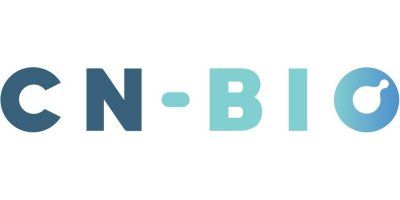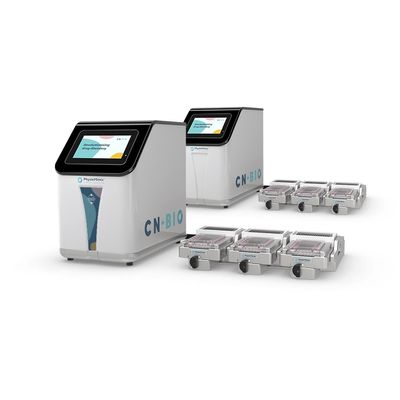


PhysioMimix - Model OOC - Microphysiological System
Generate human-specific pre-clinical safety and efficacy data with pioneering PhysioMimix single- and multi-organ-on-a-chip solutions.
Human-relevant data generated by the PhysioMimix OOC complements that derived using entrenched 2D cell culture and animal studies to support more confident decision-making across many drug discovery stages from target discovery right through to preclinical development.
- In vitro 2D cell culture models lack physiological relevance
- In vivo animal models lack human relevance; studies are slow, expensive, and ethically undesirable
- Inter-species differences limit the suitability of animals for testing human-specific drug modalities
- Faithfully recapitulate the phenotype and function of human organs and tissues in vitro
- Addresses the relevance limitations of standard preclinical models to validate or query their results
- Provides a rapid, usable, cost-effective and more human-relevant alternative
PhysioMimix OOC enables:
- the co-culturing of human cells to faithfully recreate human organs and tissues
- perfused scaffolds to promote 3D organ model formation
- compatibility with inserts for apical and basolateral tissue growth to recreate a biological barrier
- recirculating fluidic flow delivering biomechanical stimulus, oxygen, and nutrients
- adjustable inter- and intra-organ flow rates to enhance physiological relevance
- viability, function, and phenotype to be maintained over many weeks to enable longer-term chronic disease and dosing studies
- deep mechanistic insights via large sampling volume (up to 1 mL) and individual microtissue analysis
- modeling of the immune system via the inclusion of circulating and tissue-specific immune cells
- Lab benchtop ready : Compact and compatible with existing equipment
- User friendly : Program and start a run in less than 1 minute
- Open-well design : Supports your 2D to 3D cell culture transition
- Real-time monitoring : Remove samples for analysis, experiments continue to run
- “Set-and-Run” Perfusion : Long-term automated experiments with minimal user input
- Tissues and cells : Compatible with a range of pre-formed tissues and cell types for ultimate flexibility
- Multi-organ compatible : Connect two organs via microfluidics to study crosstalk
- Reduced cost/chip : More experiments, same cost reduces adoption barriers
- Data confidence : In-plate replicates, controls and dose-responses
- Higher throughput : Generate OOC insights earlier than ever before
PhysioMimix™ OOC enables
- The co-culturing of human cells to faithfully recreate human tissues
- Perfused scaffolds to promote 3D organ model formation
- Recirculating fluidic flow delivering biomechanical stimulus, oxygen and nutrients
- Adjustable inter- and intra- “organ-specific” flow rates to enhance physiological relevance
- Viability, function and phenotype to be maintained over many weeks
- Deep mechanistic insights via large sampling volume (up to 1 ml) and individual microtissue analysis
Enables the creation of in vitro 3D single-organ models to provide fast, accurate and clinically translatable human data.
Using the MPS-LC12 consumable plate, researchers can generate in vitro 3D liver microtissues that mimic the human liver microarchitecture.
With the MPS-T12 consumable plate, PhysioMimix single-organ allows scientists to develop barrier models (such as gut or lung) on Transwell® inserts.
Providing additional functionality, the multi-organ system enables scientists to reliably and easily interconnect our liver-on-a-chip model with other organs, such as gut, lung or kidney. By mimicking how organs interact and communicate as part of a complex system, researchers benefit from a deeper human-specific mechanistic understanding of disease states and drug behaviour.
This capability is facilitated by the MPS-TL6 consumable plate whose novel microfluidics enable recirculation of media from one culture compartment to the other to permit inter-organ crosstalk. When combined with PBPK mathematical modelling, in vitro data may be extrapolated to in vivo clinical predictions.
- ADME
- Disease modelling
- Drug-drug interactions
- Gene therapies
- Precision medicine
- Safety / Toxicology
- Lab Benchtop Ready – portable and compact
- Quick to set up – in less than an hour
- User friendly to operate – less than 1 minute to program and start a run
- Compatible with existing equipment – no additional purchases necessary
- Open-well plates – To support users with an easy transition from 2D into 3D culture
- Real-time monitoring – remove samples for analysis, experiments continue to run
- “Set-and-Run” Perfusion – long-term automated experiments with minimal user input.
- Compatible with a wide range of tissues and cells – e.g.: off-the-shelf pre-formed tissues or stem cells
- NEW: Multi-Organ compatible – link two or more tissue systems using microfluidics, reveal how multiple organs interact and respond to stimuli
PhysioMimix organ-on-a-chip (OOC) instruments allow researchers to culture microtissues that mimic the structure and function of human tissues and organs.
A wide range of routine laboratory assays can be run to identify drug targets, understand drug interactions and mechanisms of toxicity to more closely predict clinical outcomes.
PhysioMimix is a suite of hardware, consumables and assay protocols that enable the co-culturing of human cells straight out of the box. The perfused system provides accurate fluidic flow that replicates the bloodstream promoting 3D organ model formation and supports the inclusion of circulating immune cells to mimic the immune system.
By improving the in vivo predictivity of in vitro data, PhysioMimix OOC systems help companies like yours to develop safe and efficacious therapeutics, faster and more cost-effectively, while reducing your dependence on animal usage.
